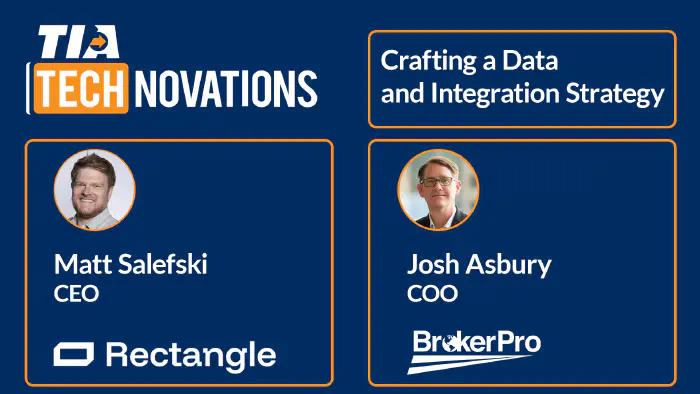October 21, 2025

Three Back Office Key Performance Indicators Your Freight Brokerage Is Probably Not Tracking
- December 23, 2021
- BrokerPro Team
It is often said that freight brokers make money “in the margins.” From contract rates to carrier efficiency to deadhead miles, few industries watch data as closely as freight brokers.
These metrics are pretty standard across the industry, and there are many tools available to help you see how your business compares to others so you can identify where you need to improve. However, there are metrics to which DAT or Freightwaves don’t have access to – your business’s overall efficiency. You can’t control things like carrier rates or general supply chain backlogs, but you can dramatically improve your business’s overall productivity by measuring and improving how you operate.
This article seeks to give you insights and ideas into what Key Performance Indicators (KPIs) you should begin measuring so you can better understand how to increase your overall profitability.
1. Back-Office Personnel and Software Costs
How much does your back-office cost you each year? The first part of this is relatively easy to calculate. Add up the annual salary costs of your back-office team. Be sure to include the costs of any hardware or software they use to do their jobs.
So, let’s say you have 4 people running your back office working 40 hours / week and are paid $20 / hour. Your daily personnel costs are $640 ((4 * 8) * $20). There are 261 working days a year, so your annual personnel costs are $167,040 ($640 * 261)
From rate quotes to document management to customer invoicing to integrations, there are many costs baked into your TMS software. For sake of simplicity, we will assume that you are paying about $250 / month in overall software costs for each member of your back-office team. This turns into an additional $12,000 / year to support your back office (( 4 * $250) *12).
Finally, your back-office team needs to work with other people in your company to troubleshoot issues with carriers or customers. Oftentimes this collaboration occurs because your systems aren’t efficient or intuitive to use. At a minimum, they are likely spending 10% of team members’ time collaborating. This roughly equals $16,704 ($167,040 * 10%) in additional back-office costs.
With this example, you are paying over $195,000 in back-office costs to support a team of 4. Consider what would happen if you were able to improve the efficiency of your back office by 25%. You would save your business approximately $50,000 / year – money that could be spent on hiring sales reps to help grow your business as opposed to putting it into a cost center.
2. Accounts Receivable Accuracy
Do you know how many invoices are returned to you to rework because they are incomplete or contain inaccurate information?
These are routine examples of mistakes made by your AP and AR teams that cost your business significant time and money. These teams manage an inordinate amount of data, and if your systems don’t support them well, they will make costly errors.
For example, a customer of yours likely has 45 day payment terms, and they also require that certain documents are included with each invoice you send them. These could be PODs, lumper receipts, wash tickets, etc. If your team forgets to attach a wash receipt, your customer is entitled to wait to the 44th day to inform you that you didn’t provide the correct documentation for a load. Your team now must spend several hours (at $20/hour) over a couple of days working with the carrier to secure the right documents before re-submitting the invoice to your customer. At that time, the Net 45-day term re-starts.
A small error like this has negatively impacted your cash flow by 45-50 days. How many of these errors occur and how much are they costing your business. You need to measure the amount of rework your Accounts Payable team is doing and work to reduce it.
Here’s an example to provide some context for how much this may be costing your freight brokerage. Let’s assume you move 100,000 loads each year, and 10% are invoiced incorrectly. Your Accounts Receivable team is now managing 110,000 loads a year because they must rework the errors. If you have 2 AR team members, they are handling 55,000 loads each year – meaning you are paying them $1.38 / load to invoice your customers. If you eliminate this rework, your cost per load is reduced to $1.25 – saving you $13,000 each year. This number doesn’t include the negative impacts that providing the additional float to your customers has on your cash flow.
3. Accounts Payable
Have you ever paid the wrong carrier on a load and need to track that money down? How often have you had to call your bank to issue a stop payment on a check?
The freight brokerage back office is complex, and many hands sometimes touch a single load. Do you pay the carrier or the factor? Were multiple carriers assigned to different legs of a load? Mistakes happen, but those mistakes are costly in time and money – and your reputation as a broker.
The average cost to issue a stop payment is $20. Let’s continue with the 100,000 loads per year scenario so you can understand how much this is potentially costing you. If your AP team pays the wrong carrier on just 1% of your loads (1,000 loads), you are potentially paying an additional $20,000 / year in stop payments to banks. These are often complex to work through, and your team might spend 2-3 hours resolving the issue. Conservatively, this means you are spending 2,000 hours each year to rectify mistakes. At $20/hour, you are adding $40,000 in personnel costs to your bottom line.
A 1% error rate on paying carriers might not seem like much, but the costs add up very quickly. You can dramatically cut costs by measuring this and ensuring your team is working with the right tools to ensure these mistakes are eliminated.
In Summary
The freight broker back office represents a great opportunity for you to reduce your costs. While there are many KPIs out there for you to measure, we recommend starting with these three. Measure your team’s productivity per load. See how and if the tools you have provided make them more efficient. Understand when your team makes errors and learn how you can reduce or eliminate them. The effects of making this time investment will reap significant rewards when it comes to increasing your bottom line, cash flow, reputation in the market, and your team’s. overall job satisfaction.


